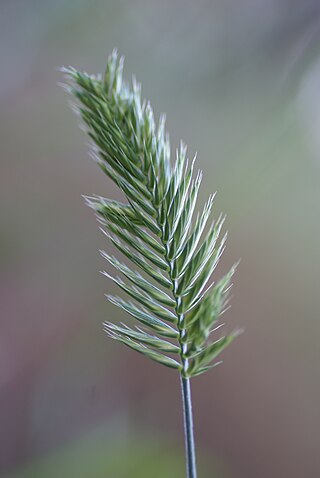Top Qs
Timeline
Chat
Perspective
Wangenheimia
Genus of grasses From Wikipedia, the free encyclopedia
Remove ads
Wangenheimia is a monotypic genus of plants in the grass family. The only known species is Wangenheimia lima.[2][3]
Remove ads
Description
An annual ornamental grass, which bears unusual, feather-like or herringbone-shaped seedheads on long, wiry stems, all summer long.[4] It can grow up to 60 cm (24 in) tall, with long green leaves that have shades of silver when young.[5]
Taxonomy

The genus is named after the Prussian botanist Friedrich Adam Julius von Wangenheim (1749–1800).[2][6] The Latin specific epithet of lima refers to the Latin noun of file, often referring to a rough surface.[7] Wangenheimia was first described and published in Methodus on page 200 in 1794.[1] The species was first published in Fund. Agrost. on page 132 in 1820.[8]
The genus is not recognized by the United States Department of Agriculture and the Agricultural Research Service, listing it as a synonym of Festuca L. and they do not list any known species.[9]
Remove ads
Distribution
It is native to Spain and Portugal (in Europe) and Morocco, Algeria and Tunisia (in North Africa).[1][10][11]
It is found in grasslands,[12] at altitudes of 500 metres (1,600 ft) above sea level.[13]
Cultivation
It has been cultivated under the name Wangenheimia 'Lima Vulcan',[5] Wangenheimia lima 'Vulcan',[14] or Wangenheimia lima ‘Vulcan’ and “Vulcan Grass”.[15]
References
Wikiwand - on
Seamless Wikipedia browsing. On steroids.
Remove ads

